KLINEFELTER - sperm from non-mosaic 47,XXY males
List of medical journal articles on sperm production in non-mosaic Klinefelter men.
There is a condition a small percentage of men are born with, the understanding of which will be very important to a key determining factor in achieving female sperm, i.e, meiosis of altered female diploid germ cells (females germ cells with 2 X and 1 Y chromosome). This condition is known as Klinefelter's syndrome. What follows is an introduction to this condition and the current research to determine how such men are able to produce sperm (a process still not fully understood). A 47 XXY Web site provides basic information on this condition.
The vast majority of males can be genetically labeled as 46,XY males. That is, males have 46 chromosomes, 44 of which are mostly equivalent pairs - plus 2 sex chromosomes, one X and one Y. Females are genetically labelled as 46,XX females. In about one out of every 1000 male births, the male has an extra X chromosome, and is labelled either 47,XXY or 46,XY/47,XXY males. 47,XXY are labelled as "non-mosaic", meaning all of the cells in their body have 47 chromosomes. 46,XY/47,XXY males are labelled as "mosaic", meaning their bodies are a mixture of cells with 46 chromosomes and cells with 47 chromosomes.
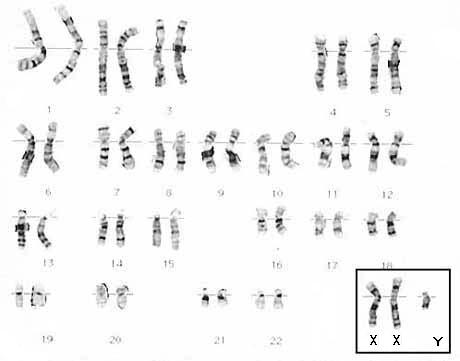
Picture credit:
Genetic Science Learning
Center, Department of Human Genetics, University of Utah.
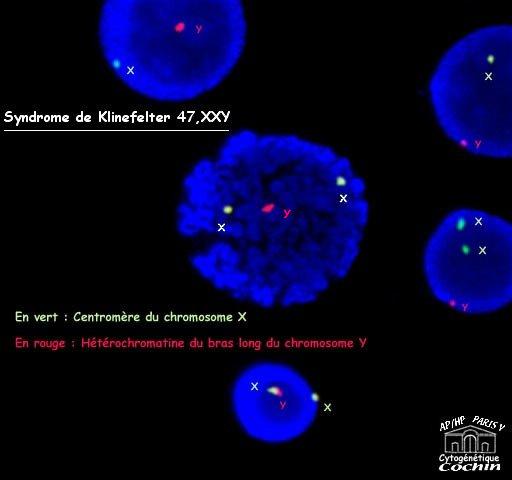
Picture credit:
Paris Virtual University
Males with Klinefelter Syndrome exhibit certain traits: they tend to be taller, have less body hair, and low sperm counts. Click here for introductions to Klinefelter's Syndrome and Understanding Klinefelter Syndrome.
It is not, and was not, surprising to learn that mosaic 46,XY/47,XXY males are able to make sperm, since there is likely to be enough sex organ cells (especially Sertoli cells) and sperm cells with the normal gene count (46,XY) for the production of sperm to occur. The lower sperm counts can be attributed to the presence of the potentially disruptive 47,XXY cells. But what if the male is completely non-mosaic, with no 46,XY cells anywhere in the body, including no 46,XY sperm cells and no 46,XY sex organ cells. Do such non-mosaic males exist and can they make sperm (especially via meiosis)? This is a very important question to female sperm production since one way of making female could be to create 47,XXY female germ cells.
First, as far back as 1963, it was suspected that 47,XXY males could have viable sperm for fertilization (suggesting but not suggested that an XXY female germ cell could become sperm). The unresolved question is whether these non-mosaics are truly non-mosaics, and if not, whether 47,XXY germ cells would be meiotic in a purely 46,XY testicular environment (transplanted via Brinster), an environment with 46,XY Sertoli cells - the only somatic cells in direct contact with differentiating germ cells (Sertoli cells provide both physical and nutritional support for spermatogenesis, which occurs in the intercellular spaces between Sertoli cells).
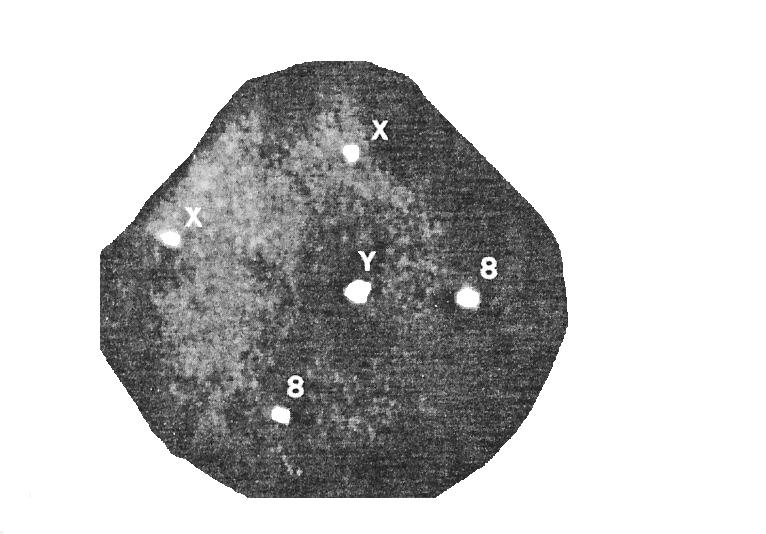
47,XXY Spermatogonia - Picture credit:
Carlo Foresta et.al.,J. Clin. Endo. Meta., v84 1999, 3807-10
Experiments in mice demonstrate in vitro MITOTIC preliferation of XXY germ cells (see the next section). This leaves the question if in vivo MEIOTIC proliferation can occur (for example in an XY testis) or in vitro meiotic proliferation, which addresses the problems of abnormal meiotic regulation in the XXY testis. This issue will be the main stumbling block to achieving female sperm.
Second, experiments with male mice bred to have a similar XXY condition have shown that such male mice again, while having low sperm counts, are able to produce sperm. Additionally, germ cells from such males are able to MITOTICALLY proliferate in vitro similar to germ cells from normal male mice.
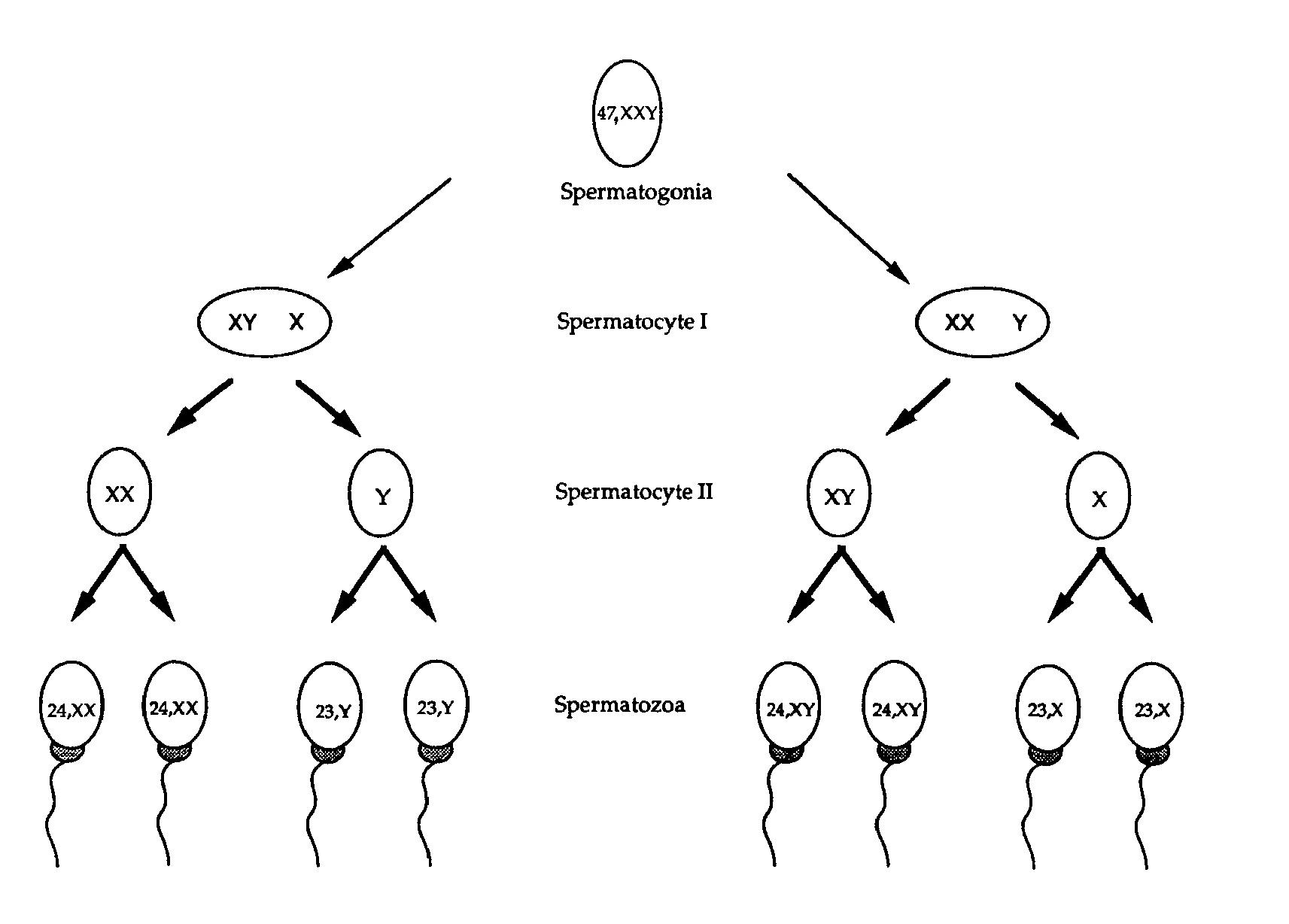
Possible XXY meiosis pathways
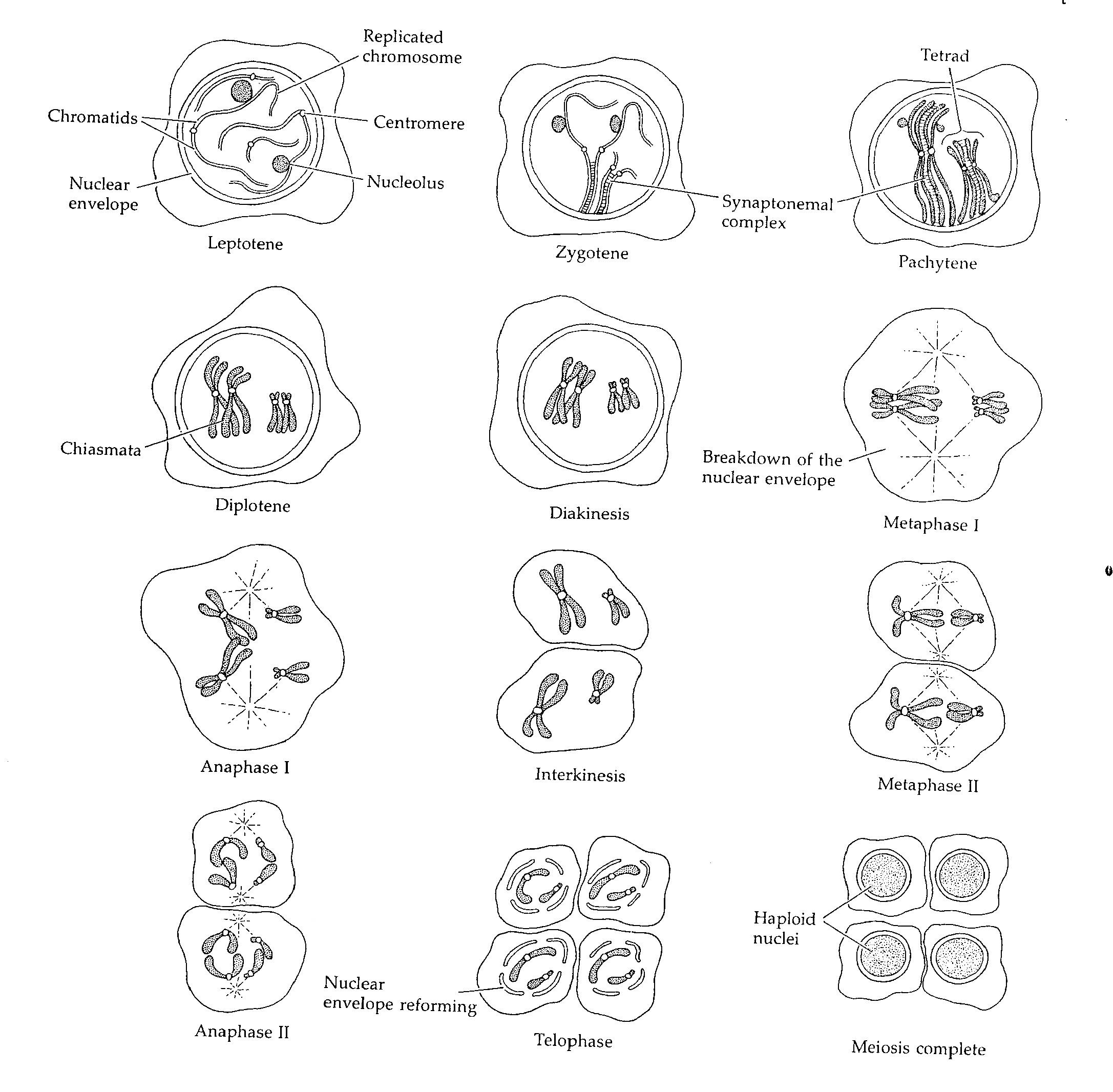
Stages of meiosis - Picture credit: Developmental Biology, Scott
Gilbert, 3rd edition, 793
The biology Web site www.maxamin.com has some nice animations on genetics, including two of interest to sperm production: the meiotic process of Spermatogenesis, and Stages of Meiosis.
List of journal article dealing with non-mosaic Klinefelter sperm production
Four pregnancies in nonmosaic Klinefelter's syndrome using cryopreserved and thawed testicular spermatozoa (2005)Recombination in men with Klinefelter syndrome (2005)
Birth of healthy neonates after intracytoplasmic injection of ejaculated or testicular spermatazoa from men with nonmosaic Klinefelter's syndrome (2004)
Reproductive genetic counselling in non-mosaic 47,XXY patients (2003)
Biopsied testis cells of four 47,XXY patients: fluorescence in-situ hybridization and ICSI results (2002)
Meiosis and Klinefelter's syndrome (2002)
Prognostic value of the clinical and laboratory evaluation in patients with nonmosaic Klinefelter syndrome who are receiving assisted reproductive therapy (2002)
Morphometric and cytogenic characteristics of testicular germ cells and Sertoli cell secretory function in men with non-mosaic Klinefelter's syndrome (2002)
Meiotic behaviour of the sex chromosomes in three patients with sex chromosome anomalies (47,XXY, mosaic 46,XY/47,XXY and 47,XYY) assessed by flourescence in-situ hybridization (2001)
Birth of a healthy girl after ICSI with ejaculated spermatozoa from a man with non-mosaic Klinefelter's syndrome (2001)
Birth of two infants with normal karotype after intracytoplasmic injection of sperm obtained by testicular extraction from two men with nonmosaic Klinefelter's syndrome (2001)
Testicular ultrasonography and extended chromosome analysis in men with nonmosaic Klinefelter syndrome (2001)
Sperm chromosome analysis and outcome of IVF in patients with non-mosaic Klinefelter's syndrome (2000)
A 47,XXy fetus conceived after ICSI of spermatozoa from a patient with non-mosaic Klinefelter's syndrome (2000)
Analysis of meiosis in intratesticular germ cells from subjects affected by classic Klinefelter's syndrome (1999)
Birth of twin males with normal karotype after intracytoplasmic sperm injection with use of testicular spermatazoa from a nonmosaic patient with Klinefelter's syndrome (1999)
Birth of a healthy neonate following the intracytoplasmic injection of testicular spermatozoa from a patient with Klinefelter's syndrome (1999)
Meiotic products of a Klinefelter 47,XXY male as determined by sperm flourescence in-situ hybridization analysis (1998)
Germ cell loss in the XXY male mouse: altered X-chromosome dosage affects prenatal development (1997)
Germ cell development in the XXY mouse: evidence that X chromosome reactivation is independent of sexual differentiation (1999)
Meiotic aneuploidy in the XXY mouse: evidence that a compromised testicular environment increases the incidence of meiotic errors (1998)
Births after intracytoplasmic injection of sperm obtained by testicular extraction from men with nonmosaic Klinefelter's syndrome (1998)
Pregnancy after intracytoplasmic sperm injection with sperm from a man with a 47,XXY Klinefelter's karyotype (1997)
Segregation of sex chromosomes into sperm nuclei in a man with 47,XXY Klinefelter's karotype: a FISH analysis (1997)
Increased incidence of hyperhapolid 24,XY spermatazoa detected by three-colour FISH in a 46,XY/47,XXY male (1996)
Constitution of semen samples from XYY and XXY males as analysed by in-situ hybridization (1996)
Preimplantation diagnosis for X and Y normality in embryos from three Klinefelter patients (1996)
Testicular sperm recovery in nine 47,XXY Klinefelter patients (1996)
Achievement of meiosis in XXY germ cells: study of 543 karyotypes from an XY/XXY mosaic patient (1994)
Fertility in a 47,XXY patient: assessment of biological paternity by DNA fingerprinting (1992)
Synaptonemal complex studies in a mosaic 46,XY/47,XXY male (1984)
X-linked gene for testicular feminization in mouse (1970)
Meiotic chromosome in Klinefelter's syndrome (1969)
Possible fertility in Klinefelter's syndrome (1963)